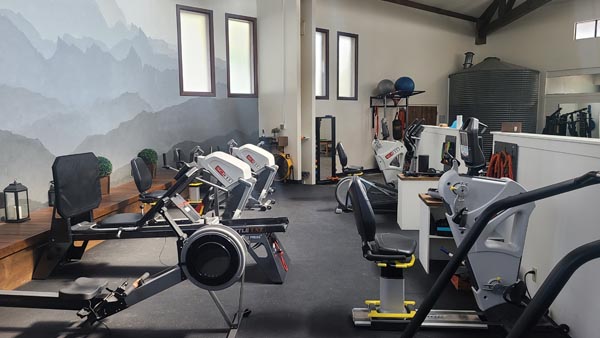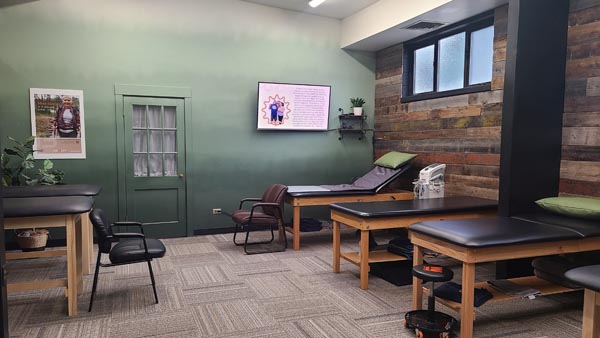Purchasing Preowned Physical Therapy Equipment
 In the realm of physical therapy, the choice of equipment can significantly impact the quality of care provided to patients. For many clinics and practitioners, the decision to purchase new or preowned equipment is a critical one. This blog will explore the reasons, benefits, cost advantages, and potential downsides of purchasing preowned physical therapy equipment.
In the realm of physical therapy, the choice of equipment can significantly impact the quality of care provided to patients. For many clinics and practitioners, the decision to purchase new or preowned equipment is a critical one. This blog will explore the reasons, benefits, cost advantages, and potential downsides of purchasing preowned physical therapy equipment.
Reasons for Purchasing Preowned Physical Therapy Equipment
- Cost Savings: The primary reason many physical therapy clinics opt for preowned equipment is the significant cost savings. New equipment can be prohibitively expensive, especially for small or newly established practices. By purchasing preowned equipment, clinics can access high-quality tools at a fraction of the cost.
- Rapid Expansion: For growing practices, the need to quickly expand their range of equipment can be pressing. Preowned equipment allows for rapid acquisition of multiple pieces of equipment without the financial strain of buying new.
- Access to High-End Equipment: Clinics might have the opportunity to purchase high-end or specialized equipment that would otherwise be unaffordable if bought new. This can enhance the quality of care and the range of services offered.
- Sustainability: Buying preowned equipment is an environmentally friendly option. It reduces waste and the demand for new manufacturing, aligning with sustainable business practices.
Benefits of Purchasing Preowned Physical Therapy Equipment
- Lower Initial Investment: One of the most immediate benefits of purchasing preowned equipment is the lower initial investment. This can free up capital for other critical areas such as staff training, marketing, or facility improvements.
- Quicker Return on Investment (ROI): With a lower initial cost, the return on investment can be realized more quickly. This is particularly important for new clinics that need to become profitable as soon as possible.
- Depreciation Savings: New equipment depreciates rapidly in the first few years. By purchasing preowned equipment, the initial steep depreciation is avoided, allowing clinics to retain more value in their assets.
- Flexibility: Preowned equipment purchases can offer more flexibility. Clinics can experiment with different types of equipment without committing large sums of money. This flexibility can be advantageous when adapting to changing patient needs or testing new treatment modalities.
- Established Reliability: High-quality physical therapy equipment is built to last. By purchasing preowned items from reputable sources, clinics can obtain reliable equipment that has been well-maintained and proven effective over time.
 Cost Advantages of Purchasing Preowned Physical Therapy Equipment
Cost Advantages of Purchasing Preowned Physical Therapy Equipment
- Lower Purchase Price: The most direct cost advantage is the significantly lower purchase price compared to new equipment. This allows clinics to stretch their budgets further.
- Reduced Financing Costs: Lower purchase prices often mean reduced financing needs, resulting in lower interest payments and overall financing costs.
- Warranty and Service Packages: Many preowned equipment suppliers offer warranties and service packages. These can provide peace of mind and mitigate the risks associated with purchasing used equipment.
- Tax Benefits: In some regions, purchasing preowned equipment may offer tax advantages. Businesses can often deduct the cost of equipment purchases, and the lower cost of preowned items can still yield substantial tax benefits.
Possible Downsides of Purchasing Preowned Physical Therapy Equipment
- Limited Availability: One of the primary challenges is the limited availability of specific types or models of equipment. Clinics might have to wait for the right piece of equipment to become available or compromise on their exact specifications.
- Higher Maintenance Costs: Preowned equipment may come with higher maintenance and repair costs, especially if it has seen extensive use. It’s essential to thoroughly inspect and assess the condition of any preowned equipment before purchase.
- Lack of Warranty: Not all preowned equipment comes with a warranty, and those that do may offer limited coverage. This can expose clinics to higher costs if the equipment fails or needs significant repairs.
- Technological Obsolescence: Older equipment may lack the latest technological advancements. While this may not be critical for all types of equipment, it can be a drawback for clinics that want to offer the most cutting-edge treatments.
- Compatibility Issues: There can be compatibility issues with other equipment or software, particularly if the preowned equipment is significantly older. Ensuring that the equipment integrates well with existing systems is crucial.
Mitigating Risks When Purchasing Preowned Equipment
- Due Diligence: Thoroughly research and inspect the equipment before purchasing. This includes checking the equipment’s history, maintenance records, and any signs of wear and tear.
- Reputable Suppliers: Purchase from reputable suppliers who offer guarantees, warranties, or service agreements. This can provide added security and assurance of quality.
- Testing: Whenever possible, test the equipment in a real-world setting to ensure it operates correctly and meets the clinic’s needs.
- Maintenance Plans: Invest in a comprehensive maintenance plan to keep the equipment in good working order and extend its lifespan.
- Stay Informed: Keep abreast of the latest developments in physical therapy equipment to ensure that even preowned purchases are relatively up-to-date and capable of delivering effective treatments.
Conclusion
Purchasing preowned physical therapy equipment offers a range of benefits, particularly in terms of cost savings and rapid ROI. However, it also comes with potential downsides such as higher maintenance costs and the risk of technological obsolescence. By conducting thorough due diligence, purchasing from reputable suppliers, and investing in maintenance, clinics can mitigate many of these risks. Ultimately, the decision to purchase preowned equipment should be based on a careful evaluation of the clinic’s needs, financial situation, and long-term goals. If you are in the market for new or preowned physical therapy equipment, contact the team at GM Therapy Solutions for a free quote!
